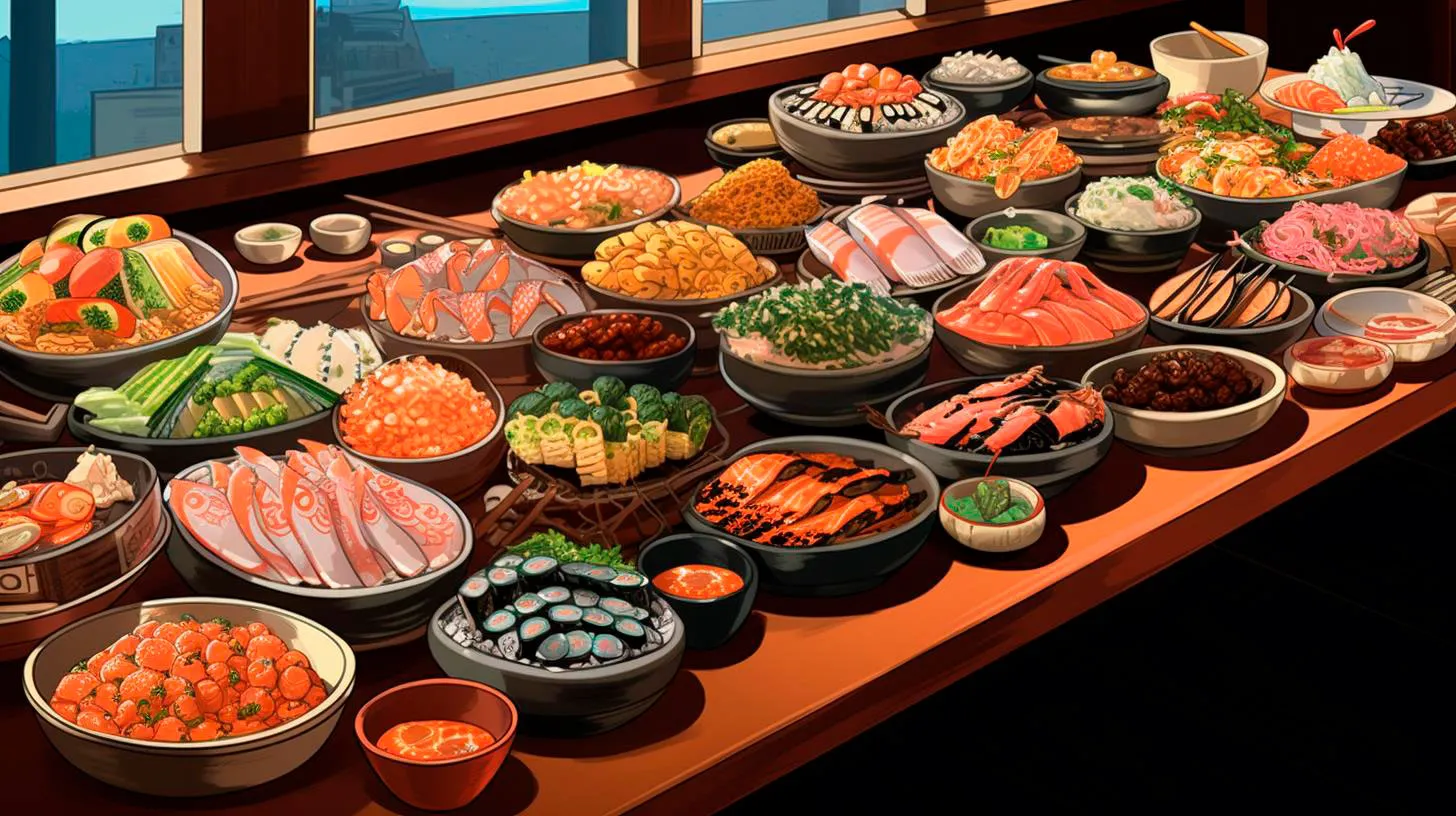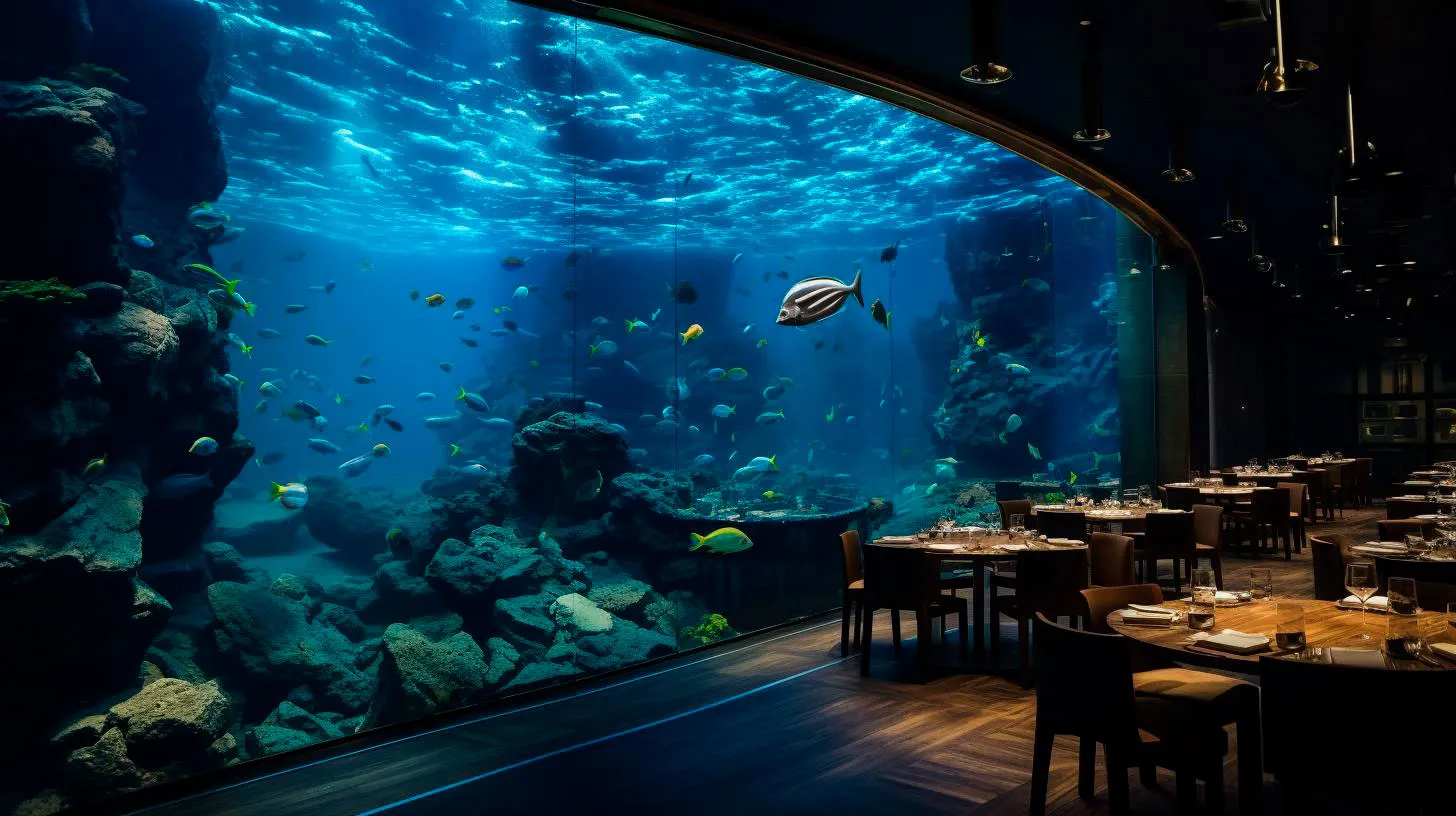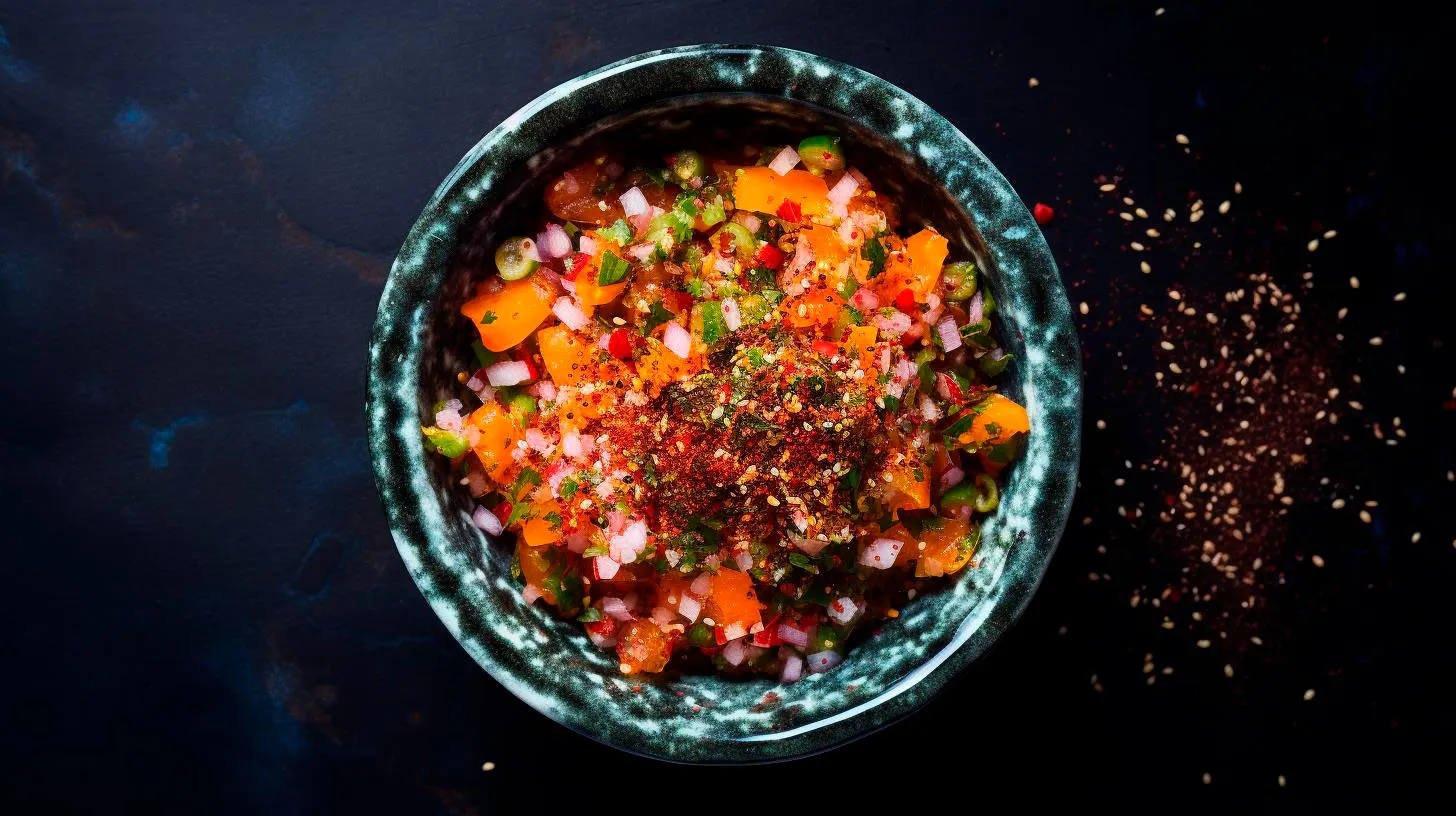Eco-conscious Sushi Restaurants: A Guide to Ocean-Friendly Dining
Eco-conscious sushi restaurants are leading the way in promoting ocean-friendly dining experiences. In this article, we will explore the key aspects of these establishments and how they are shaping the future of sustainable dining.
Understanding the Importance of Ocean-friendly Dining
The ocean plays a vital role in maintaining the balance of our planet’s ecosystems. However, overfishing, pollution, and the use of harmful fishing practices have greatly impacted marine life and contributed to the degradation of our oceans. By choosing to dine at eco-conscious sushi restaurants, individuals can actively contribute to the preservation of ocean health and support sustainable fishing practices.
Features of Eco-conscious Sushi Restaurants
Eco-conscious sushi restaurants prioritize sustainable practices at every stage of their operations. Here are some key features to look out for:
- Responsibly Sourced Seafood: These restaurants carefully select seafood options that come from well-managed fisheries or responsible aquaculture practices. It ensures that the fish populations are not being depleted and the environment is not being harmed during the fishing process.
- Local and Seasonal Ingredients: By focusing on local and seasonal ingredients, these establishments reduce the carbon footprint associated with transporting food long distances. It also supports local communities and promotes biodiversity.
- Waste Reduction: Eco-conscious sushi restaurants actively work to minimize waste by implementing sustainable packaging, composting, and recycling programs. This helps reduce the negative impact on the environment.
- Alternative Options: Many of these restaurants provide plant-based sushi options to cater to vegans and vegetarians. Choosing these options reduces the reliance on seafood and promotes a more sustainable dining experience.
- Partnerships and Certifications: Recognizing the importance of collaboration, eco-conscious sushi restaurants often partner with organizations and obtain certifications, such as the Marine Stewardship Council (MSC) certification, to verify their commitment to sustainable practices.
The Advantages of Choosing Eco-conscious Sushi Restaurants
Opting for eco-conscious sushi restaurants not only supports the environment but also offers several advantages:
- Health Benefits: These restaurants prioritize the use of high-quality ingredients, including fresh seafood and locally sourced vegetables. This ensures that the food served is nutritious and free from harmful chemicals.
- Delicious Culinary Experience: Eco-conscious sushi restaurants often feature innovative and creative menu items that are not only visually appealing but also incredibly tasty. Chefs in these establishments are dedicated to providing a memorable dining experience by combining sustainability with culinary excellence.
- Conscious Consumerism: By choosing to dine at eco-conscious sushi restaurants, individuals can align their values with their dining choices. It empowers consumers to make a positive impact simply by enjoying a meal.
- Supporting Sustainable Practices: Patronizing these restaurants helps promote sustainable fishing practices and encourages other establishments to adopt environmentally friendly methods. By showing a demand for sustainable seafood, consumers can drive positive change in the industry.
Key Takeaways
Eco-conscious sushi restaurants are at the forefront of providing diners with not only delicious sushi but also a guilt-free dining experience. By choosing these establishments, individuals can contribute to the preservation of ocean health and support sustainable practices in the food industry. Remember these key takeaways:
- Choose responsibly sourced seafood to support well-managed fisheries and aquaculture.
- Opt for local and seasonal ingredients to minimize carbon footprint.
- Look for waste reduction efforts such as sustainable packaging and recycling programs.
- Consider trying plant-based sushi options to reduce reliance on seafood.
- Support eco-conscious sushi restaurants that collaborate with organizations and possess certifications to verify their commitment to sustainability.
By making conscious choices when dining out, we can all play a part in protecting our oceans and ensuring a more sustainable future. So, the next time you indulge in the exquisite flavors of sushi, consider opting for an eco-conscious sushi restaurant and savor the delicious taste while contributing to a healthier planet.
From Farm to Table: The Rise of Sustainable Seafood in Sushi
However, this rising demand for sushi has put immense pressure on global seafood stocks, leading to overfishing and environmental degradation. The good news is that the sushi industry is now focusing on sustainability, promoting the use of responsibly sourced seafood and adopting eco-friendly practices. In this article, we will explore the journey of sustainable seafood from farm to table in the world of sushi.
The Issue at Hand
With the increase in sushi consumption, it is crucial to address the environmental impact caused by unsustainable fishing practices. Overfishing not only depletes fish populations but also disrupts the delicate balance of aquatic ecosystems. The use of destructive fishing methods such as bottom trawling and longlining further exacerbates these problems, causing damage to coral reefs and other important habitats. Recognizing this, the sushi industry has taken steps to promote sustainable seafood sourcing.
The Transition to Sustainability
In recent years, sushi restaurants and suppliers have started prioritizing sustainable practices. By working closely with organizations such as the Marine Stewardship Council (MSC) and the Aquaculture Stewardship Council (ASC), they ensure that the seafood they use comes from well-managed fisheries and responsible aquaculture operations. These certifications guarantee that the fish have been caught or farmed in a way that minimizes the impact on the environment and protects fish populations for future generations.
Moreover, sustainable sushi restaurants emphasize local sourcing. By offering sushi made from locally caught fish, they reduce the ecological footprint associated with transportation. This not only benefits the environment but also supports local fishermen and promotes the growth of sustainable fishing communities.
The Advantages of Sustainable Seafood
Choosing sustainable seafood for sushi offers a multitude of benefits:
- Preservation of Marine Ecosystems: By opting for sustainably sourced seafood, we contribute to the conservation of marine biodiversity and protect fragile ecosystems.
- Ensuring Future Generations: Sustainable practices ensure that fish populations can regenerate, guaranteeing a steady supply of seafood for future generations.
- Supporting Local Communities: Locally sourced seafood benefits coastal communities, fishermen, and their families, helping to sustain their livelihoods.
- Health Benefits: Sustainable seafood is often free from harmful chemicals and antibiotics, ensuring a healthier choice for consumers.
Key Takeaways
The rise of sustainable seafood in sushi signifies a positive shift towards responsible fishing practices. By supporting sustainable sushi restaurants and consciously choosing seafood with certifications like MSC or ASC, consumers can make a significant impact on the environment and contribute to the longevity of fish populations.
Remember these key takeaways:
- Choose sushi restaurants that prioritize sustainability and offer locally sourced options.
- Look for seafood certifications like MSC and ASC to ensure responsible sourcing.
- Spread awareness about the importance of sustainable seafood to encourage others to make informed choices.
- Support initiatives and organizations working towards creating a sustainable future for our oceans.
- Enjoy sushi guilt-free, knowing that your choices are helping to protect the environment and promote the well-being of our aquatic ecosystems.
Next time you indulge in a delicious sushi roll, savor not just the flavors but also the knowledge that you are playing a part in the rise of sustainable seafood. Let’s come together to ensure that the journey from farm to table is a responsible and environmentally conscious one.
Tuna Alternatives: Exploring Sustainable Options for Sushi
In this article, we will delve into the various options that can replace tuna in sushi, while still offering the same delectable taste and texture.
The Decline of Tuna
Tuna populations have significantly decreased over the past few decades due to overfishing. According to a report by the World Wildlife Fund, over 30% of tuna species are either overfished or depleted. This decline not only affects the ecological balance of oceans but also threatens the livelihood of fishermen who heavily rely on tuna.
Sustainable Alternatives
Thankfully, there are several sustainable alternatives to traditional tuna that can be used in sushi. These alternatives not only help to preserve tuna populations but also offer unique flavors and nutritional benefits. Let’s explore some of these options:
1. Salmon:
- Salmon is a common substitute for tuna in sushi due to its similar texture and rich taste.
- It is an excellent source of omega-3 fatty acids, which promote heart health.
- Salmon populations are more sustainable compared to many tuna species.
2. Yellowtail (Hamachi):
- Yellowtail is another popular choice for substituting tuna in sushi, with its buttery texture and mild flavor.
- It is a rich source of protein and vitamin B12.
- Yellowtail populations are relatively healthy and it can be farmed sustainably.
3. Shrimp:
- Shrimp can provide a unique twist to sushi, adding a slightly sweet and delicate taste.
- It is low in calories and high in protein, making it a nutritious alternative.
- Shrimp populations are generally more sustainable compared to tuna.
4. Crab:
- Crab meat offers a sweet and succulent flavor that can complement sushi rolls.
- It is a good source of vitamins and minerals, including selenium and omega-3 fatty acids.
- Crab populations can be sustainably managed and harvested.
Key Takeaways
Exploring sustainable alternatives for tuna in sushi not only helps protect our oceans’ ecosystems but also ensures a future supply of this beloved dish. Here are the key takeaways:
- Overfishing has led to a decline in tuna populations.
- Salmon, yellowtail, shrimp, and crab are sustainable alternatives for tuna in sushi.
- These alternatives offer unique flavors and nutritional benefits.
- Choosing sustainable options helps support fishermen and protect marine biodiversity.
So next time you indulge in sushi, consider trying one of these tuna alternatives. Not only will you delight your taste buds, but you’ll also be making a responsible choice for the environment.



